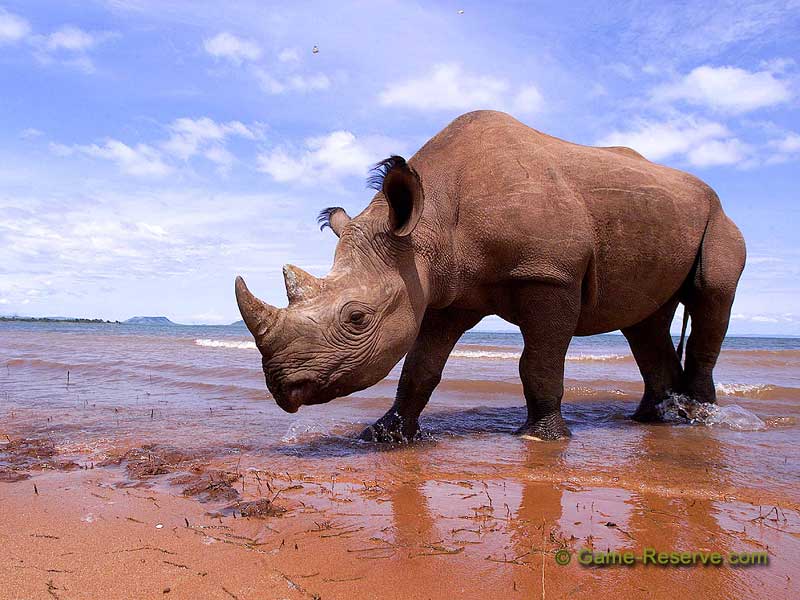act.resist
Active member
London (CNN) --
Africa's western black rhino is now officially extinct according the latest
review of animals and plants by the world's largest conservation network.
The subspecies of the black rhino -- which is classified as
"critically endangered" by the International Union for Conservation
of Nature's (IUCN) Red List of Threatened Species -- was last seen in western
Africa in 2006.
The IUCN warns that other rhinos could follow saying Africa's
northern white rhino is "teetering on the brink of extinction" while
Asia's Javan rhino is "making its last stand" due to continued
poaching and lack of conservation.
"In the case of the western black rhino and the northern
white rhino the situation could have had very different results if the
suggested conservation measures had been implemented," Simon Stuart, chair
of the IUCN species survival commission said in a statement.
"These measures must be strengthened now, specifically
managing habitats in order to improve performance, preventing other rhinos from
fading into extinction," Stuart added.
The IUCN points to conservation efforts which have paid off
for the southern white rhino subspecies which have seen populations rise from
less than 100 at the end of the 19th century to an estimated wild population of
20,000 today.
Another success can be seen with the Przewalski's Horsewhich was listed as "extinct in the
wild" in 1996 but now, thanks to a captive breeding program, has an
estimated population of 300.
The latest update to the IUCN Red List of Threatened Species
reviews more than 60,000 species, concluding that 25% of mammals on the list
are at risk of extinction.
Many plants are also under threat, say the IUCN.
Populations of Chinese fir, a conifer which was once widespread
throughout China and Vietnam, is being threatened by the expansion of intensive
agriculture according to the IUCN.
A type of yew tree (taxus contorta) found in
Asia which is used to produce Taxol (a chemotherapy drug) has been reclassified
from "vulnerable" to "endangered" on the IUCN Red List, as
has the Coco de Mer -- a palm tree found in the Seychelles
islands -- which is at risk from fires and illegal harvesting of its kernels.
Recent studies of 79 tropical plants in the Indian Ocean
archipelago revealed that more than three quarters of them were at risk of
extinction.
Africa's western black rhino is now officially extinct according the latest
review of animals and plants by the world's largest conservation network.
The subspecies of the black rhino -- which is classified as
"critically endangered" by the International Union for Conservation
of Nature's (IUCN) Red List of Threatened Species -- was last seen in western
Africa in 2006.
The IUCN warns that other rhinos could follow saying Africa's
northern white rhino is "teetering on the brink of extinction" while
Asia's Javan rhino is "making its last stand" due to continued
poaching and lack of conservation.
"In the case of the western black rhino and the northern
white rhino the situation could have had very different results if the
suggested conservation measures had been implemented," Simon Stuart, chair
of the IUCN species survival commission said in a statement.
"These measures must be strengthened now, specifically
managing habitats in order to improve performance, preventing other rhinos from
fading into extinction," Stuart added.
The IUCN points to conservation efforts which have paid off
for the southern white rhino subspecies which have seen populations rise from
less than 100 at the end of the 19th century to an estimated wild population of
20,000 today.
Another success can be seen with the Przewalski's Horsewhich was listed as "extinct in the
wild" in 1996 but now, thanks to a captive breeding program, has an
estimated population of 300.
The latest update to the IUCN Red List of Threatened Species
reviews more than 60,000 species, concluding that 25% of mammals on the list
are at risk of extinction.
Many plants are also under threat, say the IUCN.
Populations of Chinese fir, a conifer which was once widespread
throughout China and Vietnam, is being threatened by the expansion of intensive
agriculture according to the IUCN.
A type of yew tree (taxus contorta) found in
Asia which is used to produce Taxol (a chemotherapy drug) has been reclassified
from "vulnerable" to "endangered" on the IUCN Red List, as
has the Coco de Mer -- a palm tree found in the Seychelles
islands -- which is at risk from fires and illegal harvesting of its kernels.
Recent studies of 79 tropical plants in the Indian Ocean
archipelago revealed that more than three quarters of them were at risk of
extinction.



